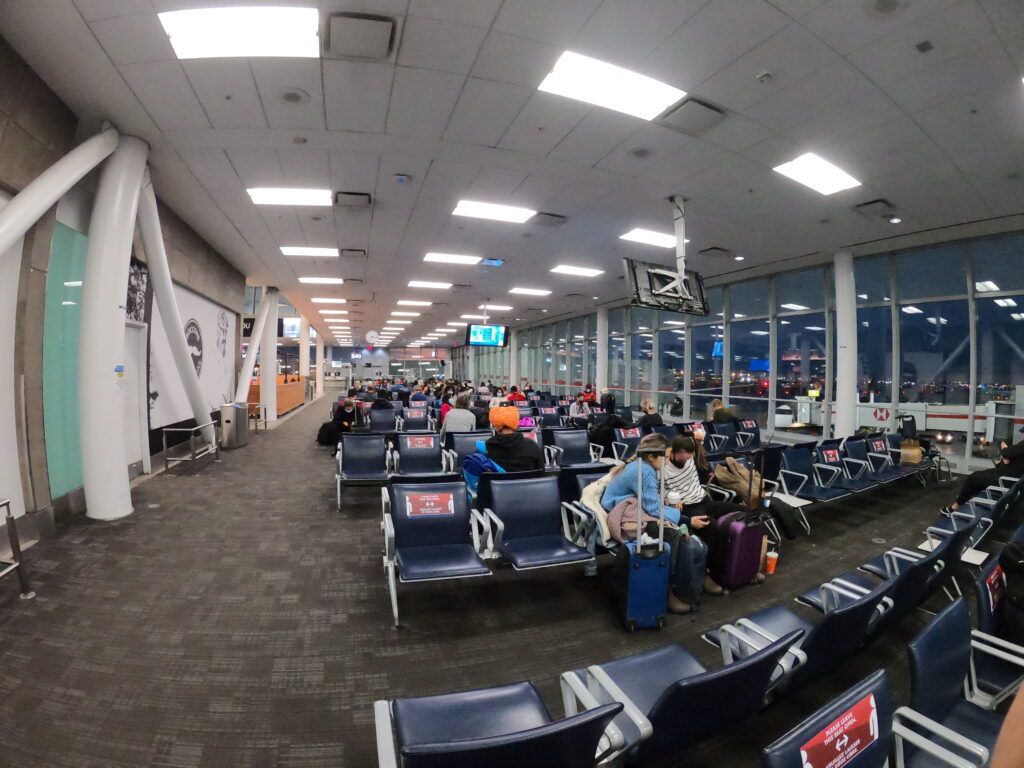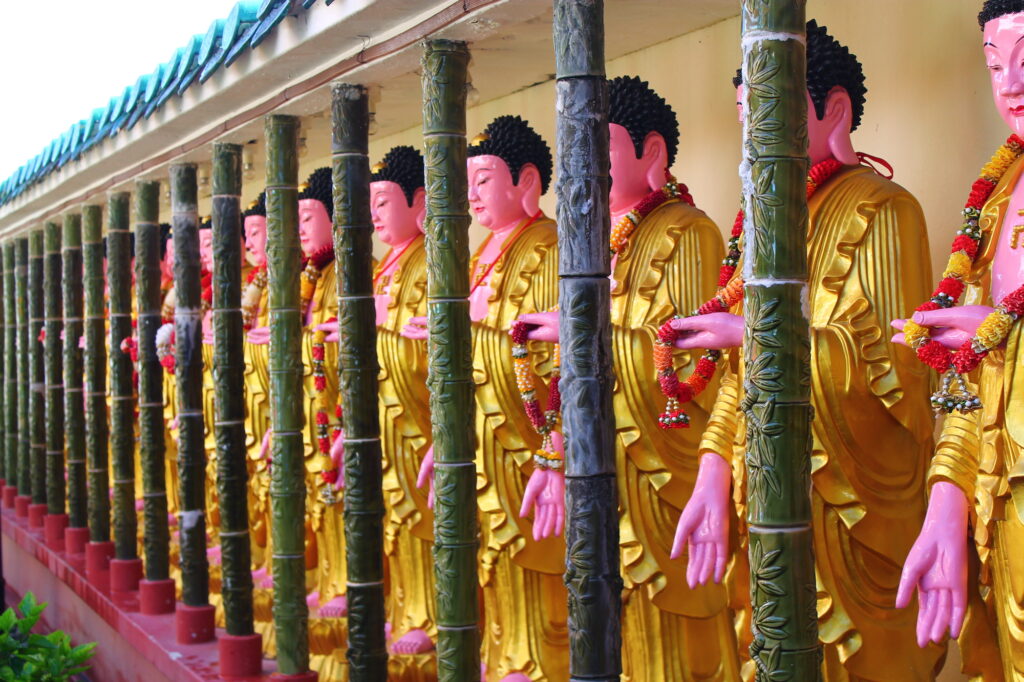Exploring a new place after flying hundreds (or thousands!) of miles is exciting.
New sights, new landscapes, new people, new food, new smells—we are filled with wonder as we explore.
As we wander with excitement, locals pass by without the same eyes of excitement, because they feel they have seen everything around them before.
Today’s discussion is going to be about training our minds to be open and receptive, and putting ourselves in the traveller’s mind whether we are wandering streets at home or abroad.
If today’s blog post resonates with you, please leave a comment, or share it with a friend!
If you prefer to listen instead check out my Youtube channel!
Don’t forget to check out some of my previous Travel Thought discussions: simplicity vs poverty, culture shock, and sublime landscapes replacing religion.
As in the last few blogs (check out how photographs jeopardize our experience or nature’s mental antidotes) I will be referencing The Art of Travel, by Alain de Botton (2002) several times to discuss this topic.
How to Travel Without Leaving Home


The first thing I am going to focus on is how we can acquire feelings of excitement and inspiration without leaving home.
I know this is exciting for a lot of us who have been at a stand still for the past while due to public health restrictions—so I hope you’re excited!
In this first excerpt, De Botton is describing information from Xavier de Maistre, who writes about travelling around his bedroom. This is a bit of a lengthy passage but trust me its full of great info!
But thereafter de Maistre may be accused of losing sight of the overall purpose of his endeavour. He becomes mired in long and wearing digressions about his dog, Rosinne, his sweetheart, Jenny, and his faithful servant, Joannetti. Prospective travellers in search of specific guidance on room travel risk coming away from reading Journey around My Bedroom feeling a little betrayed.
And yet de Maistre’s work sprang from a profound and suggestive insight: the notion that the pleasure we derive from a journey may be dependent more on the mind-set we travel with than on the destination we travel to. If only we could apply a travelling mind-set to our own locales, we might find these places becoming no less interesting than, say, the high mountain passes and butterfly-filled jungles of Humboldts’ South America.
What, then, is a travelling mind-set? Receptivity might be said to be its chief characteristic. Receptive, we approach new places with humility. We carry with us no rigid ideas about what is or is not interesting. We irritate locals because we stand in traffic islands and narrow streets and admire what they take to be unremarkable small details. We risk getting run over because we are intrigued by the roof of a government building or an inscription on a wall. We find a supermarket or a hairdresser’s shop unusually fascinating. We dwell at length on the layout of a menu or the clothes of the presenters on the evening new. We are alive to the layers of history beneath the present and take notes and photographs.
Home, by contrast, finds us more settled in our experiences. We feel assured that we have discovered everything interesting about our neighbourhood, primarily by virtue of our having lived there a long time. It seems inconceivable that there could be anything new to find in a place where we have been living for a decade or more. We have become habituated and therefore blind to it.
De Maistre tried to shake us from our passivity. In his second volume of room travel, Nocturnal Expedition around My Bedroom, he went to his window and looked up at the night sky. Its beauty make him feel frustrated that such ordinary scenes were not more generally appreciated: ‘How few people are right now taking delight in this sublime spectacle that the sky lays on uselessly for dozing humanity! What would it cost those who are out for a walk or crowding out of the theatre to look up for a moment and admire the brilliant constellations that gleam above their heads? The reason people were not looking was that they had never done so before. They had fallen into the habit of considering their universe to be boring—and their universe had duly fallen into line with their expectations.
(The Art of Travel, 2002)


I feel like that passage speaks for itself, but I did want to highlight to important things:
First.
The pleasure we derive from the journey is more dependent on the mindset we travel with, rather than the destination we travel to.
This is something I write a lot about in my memoir, because I think it’s vital for all travellers to understand if they are aiming to have meaningful experiences abroad.
Perception is everything. But there’s something else to be mindful of here.
We can’t travel away from our problems. We can be thousands of miles away from something (or someone) that is mentally draining us, but our mind won’t let us escape it completely just by putting distance between ourselves and the problem.
Beautiful destinations can provide a temporary distraction (at best), but if we are carrying around heavy negative feelings, it will be hard to truly enjoy our journey.
I speak from experience here…
I’ve encountered moments where all of a sudden a thought of anger, frustration, or sadness comes over me, even when I’m oceans apart from where those issues lie.
The trick here is this:
Focus on your perception of your surroundings.
Question what you have arbitrarily believed to be boring.
Open your mind to new possibilities.
Most of all, remember that whatever lies in your mind, is what will have the biggest impact on your experience regardless of your location.
From the Perception of a Foreigner


We’re going to dive in a little deeper into becoming a foreigner in our home towns.
I feel it’s an important reminder to consider our perception as we absorb our surroundings.
If we assume everything around us to be mundane, then of course we will have a hard time perceiving our surroundings as exciting or interesting.
But what if we could find wonder and become inspired in our own neighbourhoods?
Back to De Botton’s book for this…
(thought from Nietzsche on de Maistre)
When we observe how some people know how to manage their experiences—their insignificant, everyday experiences—so that they become an arable soil that bears fruit three times a year, while others—and how many there are!—are driven through surging waves of destiny, the most multifarious currents of the times and the nations, and yet always remain on top, bobbing like a cork, then we are in the end tempted to divide mankind into a minority (a minimality) of those who know how to make much of little, and a majority of those who know how to make little of much.
(De Botton)
There are some who have crossed desserts, floated on ice caps and cut their way through jungles bu whose souls we would search in vain for evidence of what they have witnessed. Dressed in pink-and-blue pyjamas, satisfied within the confines of his own bedroom, Xavier de Maistre was gently nudging us to try, before taking off for distant hemispheres, to notice what we have already seen.
(The Art of Travel, 2002)


I love how he says ‘we may search in vain for evidence of what they have witnessed‘.
For me this circles back to the importance of one’s mindset.
Bringing ourselves to beautiful far away locations may fill us with short lived happiness, but in order to truly capture a memorable and fulfilling experience, we must be in a receptive state of mind.
With the right mind set, we can experience much greater things while travelling far fewer miles.
I want to encourage everyone reading to take on this challenge:
Put yourself into an open, receptive frame of mind, and explore your surroundings close to home. Try to find and appreciate details you previously looked past.
What colours do you see? What smells do you notice? What people cross your path?
As I am writing this I am thinking of a few places I want to rediscover that are in the vicinity of my home.
By instilling within us the traveller’s mindset, we might be able to soothe our itchy feet, and find more pleasure in our day to day journeys at home.


That’s all I am going to discuss today!
I hope that after reading you have found some inspiration to change your mindset and explore places close to home—let me know in the comments where you plan to explore next!
If you are looking for more content like this, you can follow me on Facebook and Instagram for more thought provoking content.
For another interesting look into how we can make our trips more meaningful and memorable, check out this post!
Thanks for reading, and I wish you all the best in your future adventures.
Much love,
Dee


Pingback: The Solo Traveller's Mindset: Freedom and Focus - DeeOverseas